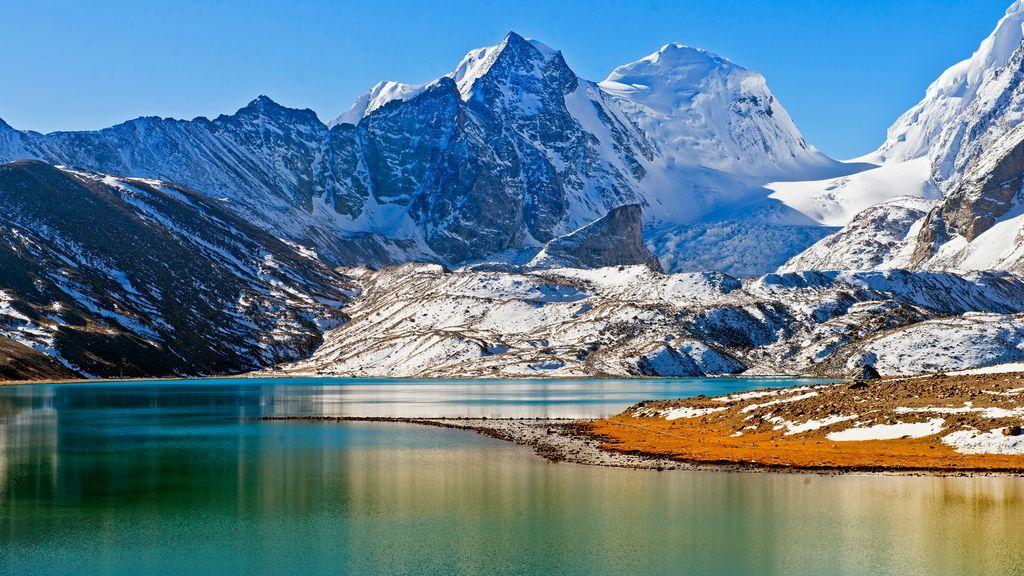Popular Wildlife Sanctuaries in Sikkim: A Journey Through the Eastern Himalayas’ Wild Heart

This guide explores the most popular wildlife sanctuaries in Sikkim, each offering a unique window into the region’s ecological wealth. Sikkim, nestled in the Eastern Himalayas, is a biodiversity hotspot that offers a stunning blend of alpine forests, glacial lakes, and high-altitude meadows. Despite being one of India’s smallest states, it harbors an astonishing variety of flora and fauna—many of which are rare, endemic, or endangered. The state’s commitment to conservation is reflected in its network of national parks and wildlife sanctuaries, which protect everything from elusive snow leopards to vibrant rhododendrons.
🏞️ 1. Khangchendzonga National Park (UNESCO World Heritage Site)
-
Location: West Sikkim
-
Area: ~1,784 sq km
-
Altitude: 1,220 to 8,586 meters
Khangchendzonga National Park is the crown jewel of Sikkim’s protected areas. Named after the world’s third-highest peak, this UNESCO-listed park is a sanctuary for high-altitude wildlife and sacred landscapes.
Key Species:
-
Snow leopard
-
Red panda
-
Himalayan tahr
-
Musk deer
-
Blood pheasant
Highlights:
-
Dzongri and Goechala trekking routes
-
Glacial lakes and alpine meadows
-
Sacred sites revered by local communities
Best time to visit: April to June, September to November
🌲 2. Fambong Lho Wildlife Sanctuary
-
Location: 20 km from Gangtok
-
Area: ~52 sq km
-
Altitude: 1,500 to 4,000 meters
Fambong Lho is a lush sanctuary known for its dense forests and birdlife. It’s easily accessible from Gangtok and ideal for short nature escapes.
Key Species:
-
Red panda
-
Himalayan black bear
-
Barking deer
-
Great pied hornbill
-
Satyr tragopan
Highlights:
-
Tinjure viewpoint
-
Rhododendron blooms in spring
-
Butterfly and birdwatching trails
Best time to visit: March to May, October to December
🌸 3. Shingba Rhododendron Sanctuary
-
Location: Yumthang Valley, North Sikkim
-
Area: ~43 sq km
-
Altitude: 3,048 to 4,575 meters
Located in the famed Yumthang Valley, this sanctuary is a floral paradise with over 40 species of rhododendrons.
Key Species:
-
Rhododendron arboreum and barbatum
-
Blood pheasant
-
Himalayan monal
-
Snow partridge
Highlights:
-
Spring bloom (April–May)
-
Scenic drives through alpine terrain
-
Proximity to Zero Point and hot springs
Best time to visit: April to June
🌳 4. Maenam Wildlife Sanctuary
-
Location: Near Ravangla, South Sikkim
-
Area: ~36 sq km
-
Altitude: 2,300 to 3,263 meters
Maenam Sanctuary is known for its medicinal plant diversity and panoramic views of the Teesta River and Kanchenjunga range.
Key Species:
-
Red panda
-
Himalayan black bear
-
Serow
-
Common leopard
-
Satyr tragopan
Highlights:
-
Maenam Hill trek
-
Traditional herbal trails
-
Forest rest house for overnight stays
Best time to visit: October to May
🌿 5. Pangolakha Wildlife Sanctuary
-
Location: East Sikkim, near Zuluk
-
Area: ~128 sq km
-
Altitude: 1,800 to 4,200 meters
Bordering Bhutan and West Bengal, Pangolakha Sanctuary is a transboundary haven for migratory and high-altitude species.
Key Species:
-
Red panda
-
Himalayan marmot
-
Asiatic black bear
-
Golden jackal
-
Mountain pit viper
Highlights:
-
Zuluk loop road and Thambi viewpoint
-
Birdwatching and herpetology trails
-
Snow-covered landscapes in winter
Best time to visit: March to June, September to November
🐦 6. Kitam Bird Sanctuary
-
Location: South Sikkim, near Namchi
-
Area: ~6 sq km
-
Altitude: 1,200 to 1,800 meters
Kitam Sanctuary is one of the few low-altitude bird sanctuaries in Sikkim, making it accessible year-round.
Key Species:
-
Red junglefowl
-
Chestnut-breasted partridge
-
Great hornbill
-
Himalayan crestless porcupine
Highlights:
-
Birding trails and butterfly zones
-
Proximity to Tarey Bhir viewpoint
-
Ideal for family nature walks
Best time to visit: October to April
🧭 Suggested Wildlife Itinerary: 6-Day Sikkim Nature Trail
Day 1: Arrive in Gangtok – visit Fambong Lho Sanctuary
Day 2: Drive to Yumthang Valley – explore Shingba Rhododendron Sanctuary
Day 3: Visit Zero Point and hot springs – return to Lachung
Day 4: Transfer to Ravangla – trek in Maenam Sanctuary
Day 5: Drive to Zuluk – explore Pangolakha Sanctuary
Day 6: Return to Gangtok or extend to Kitam Bird Sanctuary
🗓️ Best Time to Explore Sikkim’s Sanctuaries
|
Season |
Months |
Experience |
|
Spring |
Mar–May |
Rhododendron bloom, birdwatching |
|
Summer |
Jun–Aug |
Lush greenery, occasional rain |
|
Autumn |
Sep–Nov |
Clear skies, ideal for trekking |
|
Winter |
Dec–Feb |
Snow sightings, limited access to high-altitude zones |
🧳 Travel Tips
-
Carry valid ID for permits (especially for North Sikkim).
-
Pack warm layers, binoculars, and trekking shoes.
-
Hire certified guides for sanctuary visits.
-
Avoid plastic and respect wildlife boundaries.
-
Book forest rest houses in advance for overnight stays.
✨ Conclusion: Sikkim—Where Wilderness Meets Wonder
The popular wildlife sanctuaries in Sikkim are more than protected zones—they’re living classrooms of Himalayan ecology. Whether you're tracking red pandas in Maenam, photographing rhododendrons in Yumthang, or listening to hornbills in Kitam, every moment in Sikkim’s wild spaces is a step closer to nature’s soul. For eco-tourists, photographers, and curious minds, Sikkim offers a rare blend of biodiversity and spiritual serenity.





